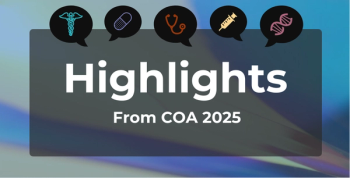
Non-Glycemic Effects of Glucagon-Like Peptide-1 Agonists and Dipeptidyl Peptidase-4 Inhibitors
Glucagon-like peptide-1 (GLP-1) agonists and dipeptidyl peptidase-4 (DPP-4) inhibitors are associated with additional effects beyond prolonging the effect of incretins. Laurie Baggio, PhD, reviewed many of the studies showing the independent anti-inflammatory effects of these drugs, which may be explored for future indications. These effects may help scientists understand some of the mechanisms behind inflammation in the body, as explained by Julio Ayala, PhD. Finally, concerns about pancreatitis with DPP-4 inhibitors and GLP-1 agonists may be largely unfounded, as explained by Vanita Aroda, MD.
Glucagon-like peptide-1 (GLP-1) agonists and dipeptidyl peptidase-4 (DPP-4) inhibitors lower glucose levels, decrease lipid levels and levels of inflammatory free fatty acids, and induce weight loss. However, these medications also show widespread anti-inflammatory effects associated with reductions in several proinflammatory cytokines—including several that play a role in inflammation in type 2 diabetes. These anti-inflammatory effects exceed the effects of reduced inflammation associated with a reduction in glucose levels.
Based on a mouse model, DPP-4 inhibitors and GLP-1 inhibitors are thought to exert their anti-inflammatory effects by reducing fat-laced macrophage infiltration into cells, which is a mechanism of atherosclerosis development. Mice treated with these medications showed slower development of atherosclerosis in the aortic artery. This effect occurred independently of weight loss.
Animal studies also showed neuroprotective effects related to changes in proinflammatory cytokines; these effects were independent of a simple effect of changes in glucose disposition. In mice that had central nervous system damage from low oxygen, a GLP-1 agonist, exendin-4, reduced inflammation in brain tissues.
GLP-1 agonists have also shown anti-inflammatory effects in psoriasis. A reduction in psoriasis severity was observed in patients with psoriasis treated with liraglutide for 10 weeks. Along with a reduction in inflammatory cytokines, additional benefits were observed including weight loss and reductions in fasting triglyceride levels. The anti-inflammatory effects of liraglutide occurred independently of glucose reductions or reductions in glycated hemoglobin levels. These results suggest that the anti-inflammatory effects of liraglutide may be harnessed for additional indications in the future.
Although the exact mechanism by which GLP-1 agonists reduce inflammation is not currently known, hypotheses include an effect on matrix metalloproteinases, a class of enzymes that are believed to play a role in infiltration of fat-containing cells into vascular tissue, leading to atherosclerosis. Other hypotheses include an effect on regulatory T-cells, especially regulatory T-cells in the pancreas. Notably, these effects were associated with a specific metabolite of liraglutide known as the 9-36 metabolite.
In addition to being linked to several areas of physiologic function (eg, function of skeletal muscle, kidney, and immune cells), GLP-1 and gastric inhibitory peptide also affect the brain. Continuing the presentation, Julio Ayala, PhD, described how anti-inflammatory effects in the brain help researchers study appetite regulation.
By injecting GLP-1 directly into the lateral ventricle of the brains of rats, Ayala and colleagues have studied how GLP-1 exposure reduces the drive to overeat. Delving further, Ayala found that GLP-1 exposure inhibited the activity of a cellular “energy sensor” in the brain known as AMP kinase.
AMP kinase is an enzyme. Using immune markers labeled with fluorescent dyes, Ayala and colleagues identified where AMP kinase was most active in the brain, allowing the team to study the effects of different kinds of carbohydrates on satiety. Mice fed with a diet of sucrose (ie, table sugar) or fructose (ie, high-fructose corn syrup) had higher levels of AMP kinase in the brain regions that stimulated hunger. Other mice fed a diet of starch, which becomes glucose, did not have high levels of this marker of increased hunger levels.
The implications of this study show a physiologic mechanism for different types of carbohydrates inducing greater levels of hunger than others. Studies do show that some sucrose and fructose does travel intact to the hypothalamus and may increase levels of hunger in humans. This groundbreaking research puts a plausible physiologic mechanism behind the theory that processed carbohydrates like high-fructose corn syrup and table sugar may contribute to obesity more than starches like bread and flour.
In the last part of the session, Vanita Aroda, MD, presented exhaustive sets of data from thousands of patients over many years, none of which showed a clear association between these medications and an increased risk of pancreatitis.
Exploration of the nonincretin effects of GLP-1 agonists has led to rich rewards in terms of understanding satiety, understanding the role of different foods in regulating satiety (eg, high-fructose corn syrup and table sugar), recognizing the anti-inflammatory effects of these medications, and evaluating the safety profile associated with their use. Research into this class of medications and hormones will continue to provide scientists with new insights into type 2 diabetes.
Newsletter
Stay ahead of policy, cost, and value—subscribe to AJMC for expert insights at the intersection of clinical care and health economics.







































